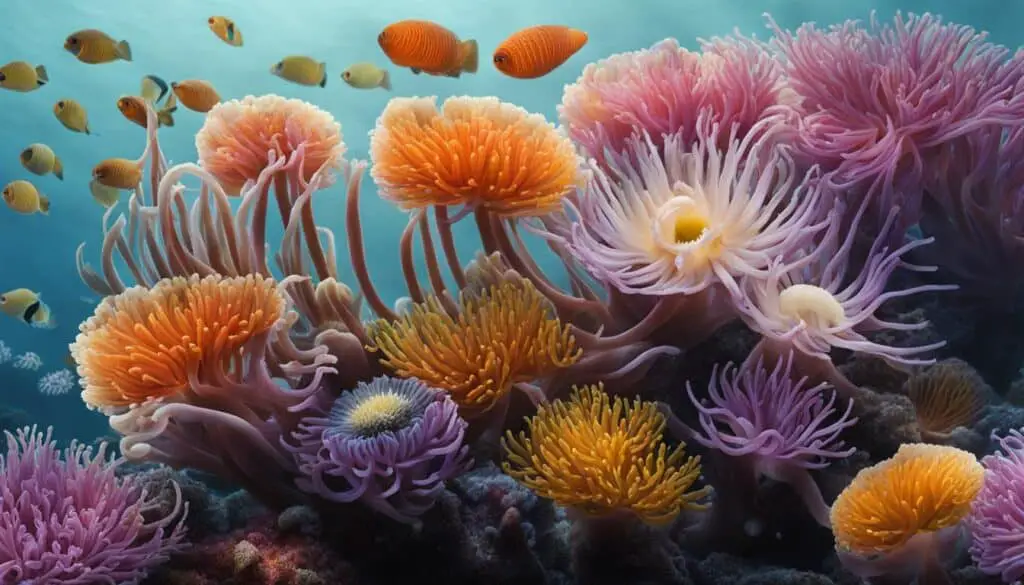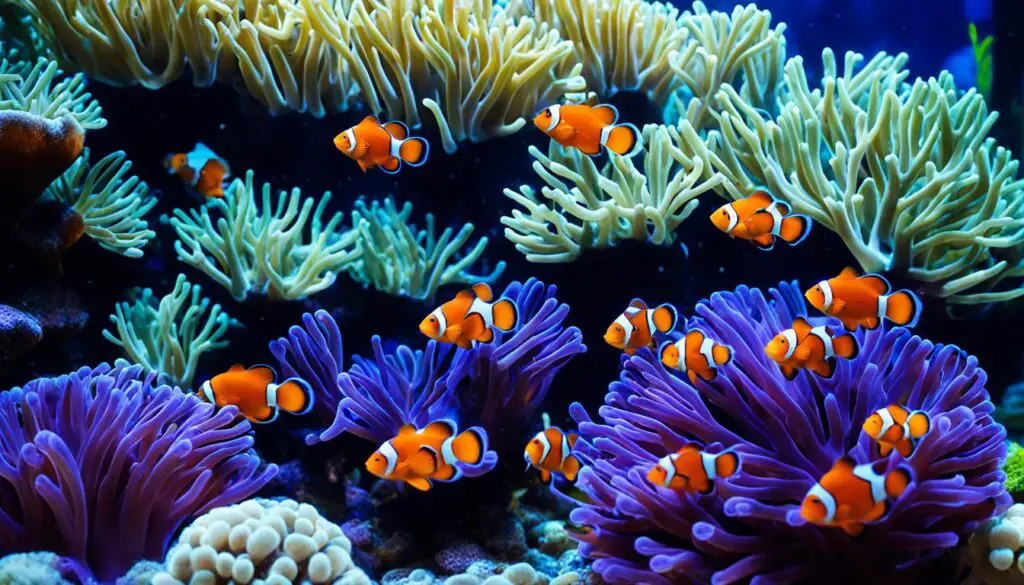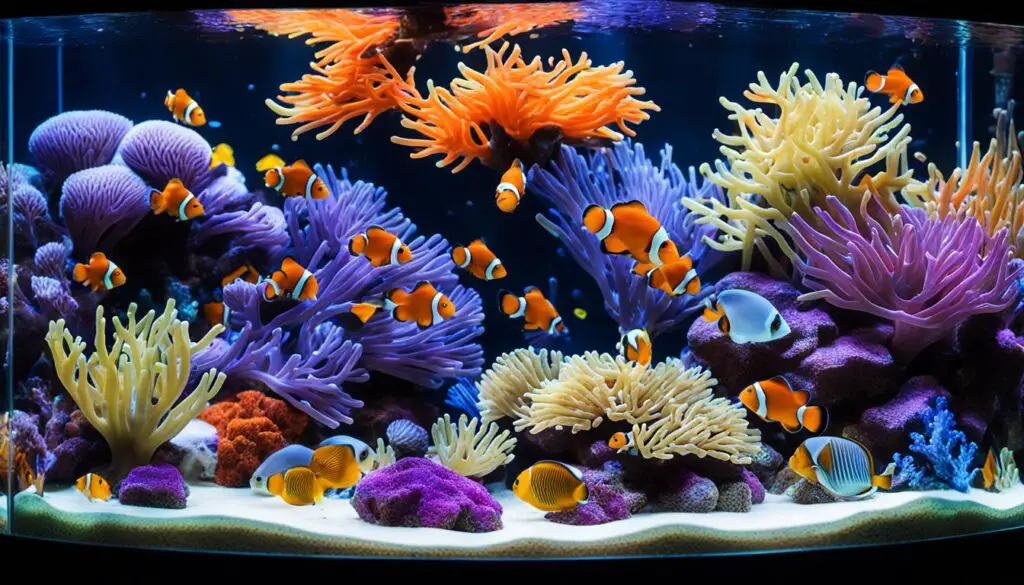Unraveling the Secrets of Anemone Species Identification

Anemones are a diverse group of marine creatures with thousands of different species. However, identifying these species can be a challenging task due to their similarities in appearance. To help unravel the secrets of anemone species identification, researchers have conducted extensive studies on the topic. These studies have provided valuable insights into the morphological, genetic, and ecological characteristics that can be used to distinguish different anemone species. By understanding these distinguishing features, scientists, enthusiasts, and even divers can better identify and classify anemones in various marine environments.
Key Takeaways:
- Anemones are a diverse group of marine creatures with thousands of different species.
- Identifying different anemone species can be challenging due to their similarities in appearance.
- Researchers have conducted extensive studies to uncover the morphological, genetic, and ecological characteristics that distinguish anemone species.
- Understanding these distinguishing features can aid in accurate identification and classification of anemones.
- By utilizing field guides, online resources, and joining organizations, enthusiasts can enhance their knowledge and skills in identifying different anemone species.
Defining Characteristics for Anemone Species Identification
When it comes to identifying different anemone species, scientists have identified several defining characteristics that can be used as identification markers. These characteristics include color patterns, tentacle arrangements, size, shape, and overall morphology. By closely examining these physical attributes, researchers can differentiate between various species and classify them accordingly.
Color patterns play a crucial role in anemone identification. Different species display unique color combinations and variations, ranging from vibrant and striking to more subdued tones. Observing and documenting these color patterns can provide valuable insights into species differentiation.
“The color patterns exhibited by anemones are like fingerprints, allowing us to distinguish one species from another with precision,” explains Dr. Emily Parker, a marine biologist specializing in anemone research.
Tentacle arrangements are another key characteristic used in anemone species classification. The number, length, and placement of tentacles can vary significantly among different species. Some anemones have long, flowing tentacles, while others may have shorter, densely packed ones. These variations serve as important identifiers during the identification process.
Size and shape are also important factors to consider. Anemones can range from a few centimeters to several meters in diameter, with different species exhibiting distinct shapes such as cylindrical, conical, or even irregular. These variations provide scientists with additional clues for species identification.
In addition to these physical characteristics, genetic analysis and molecular techniques have revolutionized anemone species identification. DNA sequencing allows researchers to examine the genetic makeup of anemones and compare it to established genetic databases. This molecular approach provides an additional layer of accuracy in species classification and has contributed to the discovery of new anemone species.

Distinguishing Characteristics for Species Identification:
| Characteristic | Description |
|---|---|
| Color Patterns | Vibrant or subdued colors unique to each species |
| Tentacle Arrangements | Varying number, length, and placement of tentacles |
| Size | Ranges from centimeters to meters in diameter |
| Shape | Cylindrical, conical, or irregular |
| Genetic Analysis | DNA sequencing for precise species identification |
Anemone Identification Tips and Resources
When it comes to identifying different anemone species, there are several tips and resources available to assist you. Whether you are a scientist, enthusiast, or diver, these tools can enhance your knowledge and skills in anemone identification.
One valuable resource is field guides, which provide detailed information on anemone taxonomy and identification keys. These guides often include high-quality images, descriptions, and distribution maps, making it easier to accurately identify and classify anemones.
Online resources are another valuable asset. Websites dedicated to marine life and diving offer comprehensive guides and databases with information on anemone identification. These resources can help you learn about the distinguishing characteristics of different anemone species and provide tips on how to differentiate between them.
Lastly, joining local diving or marine life organizations can provide unique opportunities to learn from experienced divers and experts in anemone identification. These groups often organize workshops, field trips, and educational events that can further enhance your understanding of anemones and their species. Additionally, engaging with a community of fellow enthusiasts can offer valuable insights and support in your journey towards becoming an anemone identification expert.
FAQ
What are the key characteristics used to identify different anemone species?
The key characteristics used to identify different anemone species include color patterns, tentacle arrangements, size, shape, and overall morphology. Genetic analysis and molecular techniques can also be used to classify anemone species based on their DNA sequence.
How can I enhance my knowledge and skills in identifying different anemone species?
You can enhance your knowledge and skills in identifying different anemone species by utilizing field guides and online resources that provide detailed information on anemone taxonomy, identification keys, and general identification tips. Joining local diving or marine life organizations can also provide opportunities to learn from experienced divers and experts in anemone identification.
Where can I find resources for anemone species identification?
You can find resources for anemone species identification in field guides and online platforms that offer high-quality images, detailed descriptions, and distribution maps. These resources can assist you in accurately identifying different anemone species.
How can genetic analysis help in identifying anemone species?
Genetic analysis can help in identifying anemone species by analyzing their DNA sequences. This allows scientists to determine the genetic differences between species and classify them accordingly.
Are there any online communities or forums where I can discuss anemone species identification?
Yes, there are online communities and forums where you can discuss anemone species identification with fellow enthusiasts and experts. These platforms provide a space for sharing knowledge, asking questions, and getting advice on identifying different anemone species.



